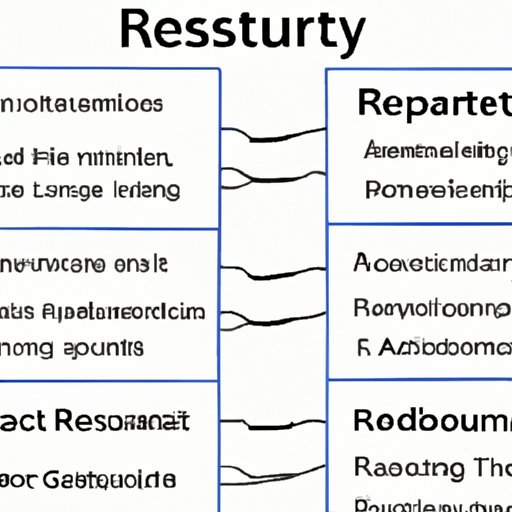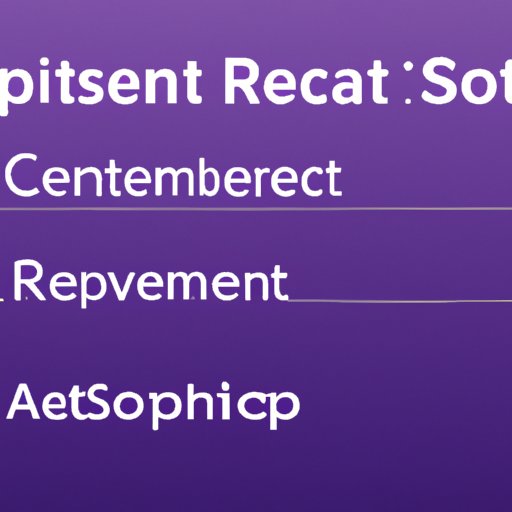Introduction to REST Architecture: What is it and How Does it Work?
REST (representational state transfer) architecture is an architectural style for creating distributed applications over the internet. It is based on a client-server model and utilizes a set of constraints to create interoperable web services. REST architecture is used by some of the world’s most popular websites, such as Twitter, LinkedIn, and Facebook. In this article, we will explore what REST architecture is, the elements of REST architecture, and how to develop a RESTful application with REST architecture.
Definition of REST Architecture
REST architecture is a software architectural style that defines a set of constraints to be used for creating web services. The term was first coined by Roy Fielding in his doctoral dissertation in 2000. REST architecture is based on the principles of Representational State Transfer (REST), which is an architectural style that uses a client-server model to facilitate communication between different components of an application. REST architecture is a way of creating web services that are both interoperable and scalable.

Overview of the Components of REST Architecture
REST architecture is composed of several components, including resources, representations, messages, and connections. Resources are the objects or entities that are being accessed by the application. Representations are the data formats used to represent the resources. Messages are the requests and responses sent between the client and server. Connections are the network protocols used to establish communication between the client and server.
Explanation of How REST Architecture Works
REST architecture works by allowing clients to access and manipulate resources on a remote server. Clients send requests to the server using HTTP methods, such as GET, POST, PUT, and DELETE. The server then responds with a representation of the requested resource. The client can then make changes to the representation and send them back to the server for processing. This process is known as the Representational State Transfer cycle.
Exploring the Benefits of REST Architecture
REST architecture offers many benefits, including increased efficiency, scalability, and improved security. By utilizing the Representational State Transfer cycle, REST architecture allows applications to process information more quickly and efficiently. Additionally, REST architecture is highly scalable, as it can easily be adapted to accommodate new technologies and changing user needs. Finally, since REST architecture is based on the principles of Representational State Transfer, it is inherently more secure than other architectures.

Understanding the Elements of REST Architecture
As mentioned previously, REST architecture is composed of several components. These components include resources, representations, messages, and connections. Resources are the objects or entities that are being accessed by the application. Representations are the data formats used to represent the resources. Messages are the requests and responses sent between the client and server. Finally, connections are the network protocols used to establish communication between the client and server.

Developing a RESTful Application with REST Architecture
Developing a RESTful application with REST architecture requires a thorough understanding of the principles of REST architecture. First, developers must identify the resources and representations that will be used in the application. Once these have been identified, developers can begin to implement an API, or application programming interface, which will allow clients to interact with the server. Finally, developers must test and debug the application to ensure that it is functioning correctly.
Examples of Applications Using REST Architecture
REST architecture is used by many popular applications and websites, including social media platforms, shopping sites, cloud storage solutions, and banking apps. For example, Twitter uses REST architecture to enable users to view and post tweets. Amazon also uses REST architecture to enable customers to search for products, add items to their shopping cart, and complete purchases. Other examples include Dropbox, which uses REST architecture to store and share files, and Chase Bank, which uses REST architecture to enable customers to view account balances and transfer funds.
Conclusion
REST architecture is a popular approach to web services that provides improved scalability, efficiency, and security. It is based on the principles of Representational State Transfer and consists of several components, including resources, representations, messages, and connections. REST architecture is used by many popular applications and websites, including social media platforms, shopping sites, cloud storage solutions, and banking apps. By understanding and utilizing REST architecture, developers can create highly efficient and secure web services.
(Note: Is this article not meeting your expectations? Do you have knowledge or insights to share? Unlock new opportunities and expand your reach by joining our authors team. Click Registration to join us and share your expertise with our readers.)
